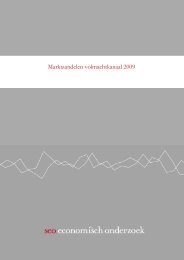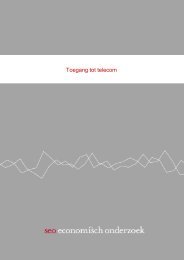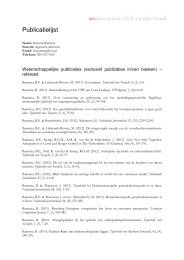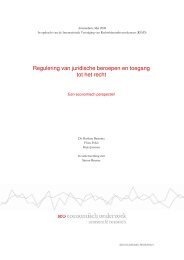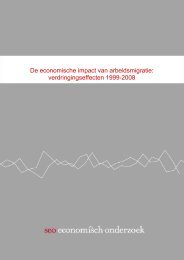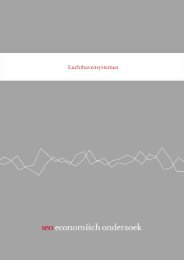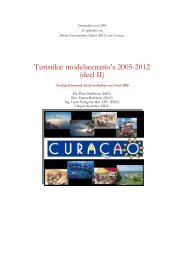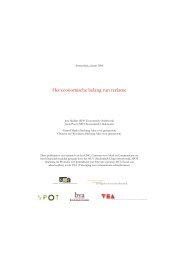Amsterdam, Netherlands - SEO Economisch Onderzoek
Amsterdam, Netherlands - SEO Economisch Onderzoek
Amsterdam, Netherlands - SEO Economisch Onderzoek
You also want an ePaper? Increase the reach of your titles
YUMPU automatically turns print PDFs into web optimized ePapers that Google loves.
<strong>Amsterdam</strong>seHogeschool voorde KunstenHogeschoolIPABOSt. <strong>Amsterdam</strong>seBalletacademieHogeschoolMarkus Verbeek<strong>Amsterdam</strong> UAS Mono-sector(arts)<strong>Amsterdam</strong>, AlmereMulti-sector<strong>Amsterdam</strong> UAS Mono-sector(arts)Alkmaar, Almere, UASMono-sector<strong>Amsterdam</strong>, Haarlem(businessand Zaanstadadministration)Hogeschool TIO <strong>Amsterdam</strong>, Haarlem UAS Mono-sector(hospitality andtourism)HogeschoolPraehep<strong>Amsterdam</strong>, Almere,Haarlem andZaanstadStichting HogerOnderwijs NOVI<strong>Amsterdam</strong>, Almereand ZaanstadHogeschool <strong>Amsterdam</strong> andThorbecke HaarlemHogeschool Haarlem andHaarlem<strong>Amsterdam</strong>Source: IB-Groep (2009)1.3 The demographic situation1.3.1 Age structure and migrationUASUASUASUASMono-sector(economics)Multi-sectorMono-sector(economics)Multi-sectorThe age structure of the inhabitants of the <strong>Amsterdam</strong> metropolitan area, as shown in Figure 1-2:Population by age and genderFigure 1-2, indicates that the percentage of individuals of age 25-50exceeds the Dutch average, whereas most of the younger (5-20) and older (50-80+) cohorts areunderrepresented compared to the national average. One reason is the presence of the city of<strong>Amsterdam</strong>, which is the place where many people choose to work or study. Another reason isthat municipalities such as Almere and Haarlemmermeer have relatively new housing, whichattracts many young families. The <strong>Amsterdam</strong> metropolitan region faces a stronger populationgrowth than the rest of the <strong>Netherlands</strong>. In 2007, the population of the <strong>Amsterdam</strong> metropolitanarea increased by 14,000 people, which is mainly attributable to high birth rates. The fastestgrowing municipality was <strong>Amsterdam</strong>, which had a population increase of 4,209. This is thecontinuation of a trend visible for years now, although the pace of population growth fluctuatesstrongly over time. Other strong population growth is found in the municipalities of Almere (agrowth of 2,346) and Haarlemmermeer (2,393).The net migration rate of the <strong>Amsterdam</strong> metropolitan region from foreign countries as well asfrom other parts of the <strong>Netherlands</strong> has varied strongly over the last two decades (Figure 1-3).The net migration rate from foreign countries has been positive over most of these years, exceptfor 1995, 1996, 2005 and 2006. In 2006, the net migration rate was at its lowest level of the lasttwo decades: -6,300. The net migration rate from other parts of the <strong>Netherlands</strong> shows equallystrong variation over the last twenty years, although it is smaller in absolute value than theforeign net migration rate. The domestic net migration rate has also been positive for most of theyears, except for the period 2000-02. In 2007, the net migration rate in the <strong>Amsterdam</strong>14



